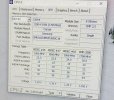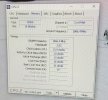My son had a relatively old build of an AMD FX CPU and DDR3 memory. His mate thought it was too slow and they both cooked up this plan to use one of his mates motherboard, CPU and memory to speed it up. The replaced it all with an AMD Ryzen 7 5800x, an MSI x470 board and 16gb of DDR4 ram. They decided to do this late on a Thursday evening, but they couldn't get it to boot. I told them that they couldn't just use the OS that was already installed for the other hardware but he insisted he had done this before and it worked. Anyhow I researched this and realised they were trying to boot an MBR drive with a UEFI board and this didn't work. They managed to enable CSM or legacy mode and it booted. It loaded loads of drivers etc, but it runs.
His issue now it that it randomly reboots 2-3 times a day. I've looked in event viewer and when it fails the error is A Fatal Hardware error has occurred,reported by component Processor Core logged by WHEA logger. Also he gets a TPM error the device driver encountered a non recoverable error with the TPM hardware.
His previous mobo didn't have a TPM.
I'm not sure of the provinance of this new hardware he's got and how long it's been sat for. My idea would be to remove CPU cooler and redo the thermal compound and then back up the system and do a full reinstall of windows. In my experience changing this much hardware and not reinstall windows is just messy.
Anyone any other ideas??
His issue now it that it randomly reboots 2-3 times a day. I've looked in event viewer and when it fails the error is A Fatal Hardware error has occurred,reported by component Processor Core logged by WHEA logger. Also he gets a TPM error the device driver encountered a non recoverable error with the TPM hardware.
His previous mobo didn't have a TPM.
I'm not sure of the provinance of this new hardware he's got and how long it's been sat for. My idea would be to remove CPU cooler and redo the thermal compound and then back up the system and do a full reinstall of windows. In my experience changing this much hardware and not reinstall windows is just messy.
Anyone any other ideas??



